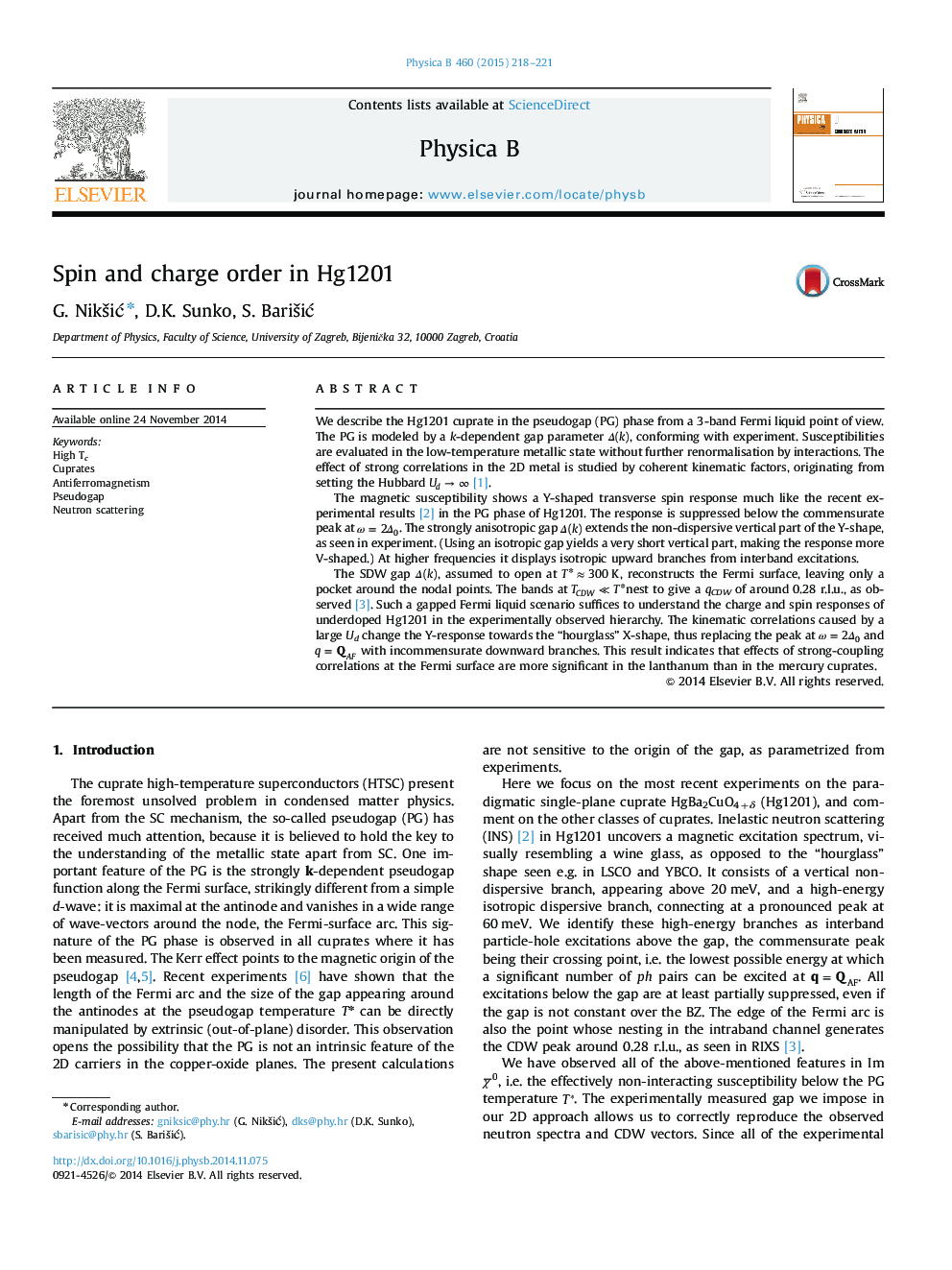| کد مقاله | کد نشریه | سال انتشار | مقاله انگلیسی | نسخه تمام متن |
|---|---|---|---|---|
| 1809013 | 1525186 | 2015 | 4 صفحه PDF | دانلود رایگان |

We describe the Hg1201 cuprate in the pseudogap (PG) phase from a 3-band Fermi liquid point of view. The PG is modeled by a k -dependent gap parameter Δ(k)Δ(k), conforming with experiment. Susceptibilities are evaluated in the low-temperature metallic state without further renormalisation by interactions. The effect of strong correlations in the 2D metal is studied by coherent kinematic factors, originating from setting the Hubbard Ud→∞Ud→∞[1].The magnetic susceptibility shows a Y-shaped transverse spin response much like the recent experimental results [2] in the PG phase of Hg1201. The response is suppressed below the commensurate peak at ω=2Δ0ω=2Δ0. The strongly anisotropic gap Δ(k)Δ(k) extends the non-dispersive vertical part of the Y-shape, as seen in experiment. (Using an isotropic gap yields a very short vertical part, making the response more V-shaped.) At higher frequencies it displays isotropic upward branches from interband excitations.The SDW gap Δ(k)Δ(k), assumed to open at T⁎≈300K, reconstructs the Fermi surface, leaving only a pocket around the nodal points. The bands at TCDW≪T⁎TCDW≪T⁎nest to give a qCDW of around 0.28 r.l.u., as observed [3]. Such a gapped Fermi liquid scenario suffices to understand the charge and spin responses of underdoped Hg1201 in the experimentally observed hierarchy. The kinematic correlations caused by a large Ud change the Y-response towards the “hourglass” X-shape, thus replacing the peak at ω=2Δ0ω=2Δ0 and q=QAFq=QAF with incommensurate downward branches. This result indicates that effects of strong-coupling correlations at the Fermi surface are more significant in the lanthanum than in the mercury cuprates.
Journal: Physica B: Condensed Matter - Volume 460, 1 March 2015, Pages 218–221